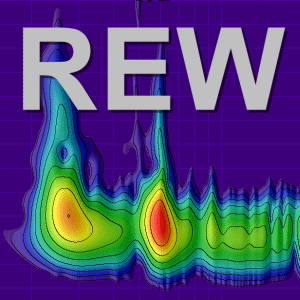EdenCerberus
New Member
Thread Starter
- Joined
- May 24, 2021
- Posts
- 3
More
- Main Amp
- Yamaha A-S700
Hi Community, this is my first post here. I will keep it short with bulletpoints to not waste your time.
What do I want to do?:
Designing speakers with REW.
What equipment do I have?:
Soundcard: Behringer UMC204HD (audio interface for REW)
ARTA Switch Box (self made)
Microphone: Sonarworks SoundID Reference Measuring Microphone with cal file
Mic-Amp: Behringer UV1 as Mic-Preamp
Amplifiers: Yamaha A-S700, Auna Amp VT and some chinese "AK35"-BT-amp.
unrelated: And some Dayton stuff back from my beginnings (OmniMic V2 and DATS v3)
What I've done so far:
- connected everything together
- calibrated the audio interface (loopback)
- didn't added the Mic-Cal-File yet to make sure it doesn't influence any calibration.
What's my problem?
I can't procede in the impedance calibration.
The 'open circuit cal' with my Yamaha looks like Kermit the Frog’s EKG on ecstasy, while with the Auna AmpVT and the cheap Chinese 'AK35,' it runs nice and flat.
I thought it had something to do with the ground, so I used a wall plug adapter without grounding for testing purposes, but it changed nothing.
However, I can’t get a satisfactory result with the 'short circuit cal' on any of my amps. The lines are totally squiggly and in different frequencies. And when I measure again, they totally different to the previous measurements.
With the Yamaha, it says, the measurement level is too low (the live Input(FR)-preview on the lower left doesn't really move) and with the other amplifiers REW says that the reference input and the measurement input are basically the same (even with 27 Ohm RSense?!?) The difference is 0.1 dB.
I run out of ideas. Do I need an Amp with a specific schematic? Afaik every amp should work. Could this be a problem with the UMC204HD-Interface? (btw: my internal sound card gave me the same results). I wasted more than 2 Weeks worth of evenings and didn't get any closer to a solution.
Every help and every hint/idea will be much appreachiated!
Thank you!



What do I want to do?:
Designing speakers with REW.
What equipment do I have?:
Soundcard: Behringer UMC204HD (audio interface for REW)
ARTA Switch Box (self made)
Microphone: Sonarworks SoundID Reference Measuring Microphone with cal file
Mic-Amp: Behringer UV1 as Mic-Preamp
Amplifiers: Yamaha A-S700, Auna Amp VT and some chinese "AK35"-BT-amp.
unrelated: And some Dayton stuff back from my beginnings (OmniMic V2 and DATS v3)
What I've done so far:
- connected everything together
- calibrated the audio interface (loopback)
- didn't added the Mic-Cal-File yet to make sure it doesn't influence any calibration.
What's my problem?
I can't procede in the impedance calibration.
The 'open circuit cal' with my Yamaha looks like Kermit the Frog’s EKG on ecstasy, while with the Auna AmpVT and the cheap Chinese 'AK35,' it runs nice and flat.
I thought it had something to do with the ground, so I used a wall plug adapter without grounding for testing purposes, but it changed nothing.
However, I can’t get a satisfactory result with the 'short circuit cal' on any of my amps. The lines are totally squiggly and in different frequencies. And when I measure again, they totally different to the previous measurements.
With the Yamaha, it says, the measurement level is too low (the live Input(FR)-preview on the lower left doesn't really move) and with the other amplifiers REW says that the reference input and the measurement input are basically the same (even with 27 Ohm RSense?!?) The difference is 0.1 dB.
I run out of ideas. Do I need an Amp with a specific schematic? Afaik every amp should work. Could this be a problem with the UMC204HD-Interface? (btw: my internal sound card gave me the same results). I wasted more than 2 Weeks worth of evenings and didn't get any closer to a solution.
Every help and every hint/idea will be much appreachiated!
Thank you!








 .
.







